Acid Orange 10
Synonym(s):1-Phenylazo-2-naphthol-6,8-disulfonic acid disodium salt;7-Hydroxy-8-phenylazo-1,3-naphthalenedisulfonic acid disodium salt;Acid Orange 10;Orange G (C.I. 16230);Wool Orange 2G
- CAS NO.:1936-15-8
- Empirical Formula: C16H10N2Na2O7S2
- Molecular Weight: 452.36
- MDL number: MFCD00012457
- EINECS: 217-705-6
- SAFETY DATA SHEET (SDS)
- Update Date: 2025-12-17 09:49:53
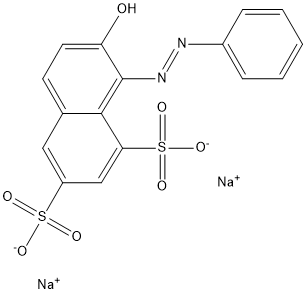
What is Acid Orange 10?
Chemical properties
orange crystals or powder
The Uses of Acid Orange 10
Orange G is an azo dye used primarily as a histological stain. Dyes and metabolites.
The Uses of Acid Orange 10
Collagen stain for connective tissue. Used with Orcein, Alizarin Blue 2B, and Fast Green FCF in Kornhauser′s quadruple stain for most elementary structures of tissues.
What are the applications of Application
Orange G is an azo dye used primarily as a histological stain
Definition
ChEBI: An organic sodium salt that is the disodium salt of 7-hydroxy-8-[(E)-phenyldiazenyl]naphthalene-1,3-disulfonic acid. It is often combined with other yellow dyes in alcoholic solution to stain erythrocytes in trichrome methods, and is used or demonstrating cells in the pancreas and pituitary.
Preparation
aniline diazo, and 7-Hydroxynaphthalene-1,3-disulfonic acid coupling.
General Description
Orange microcrystals or powder.
Air & Water Reactions
Azo dyes can be explosive when suspended in air at specific concentrations. This organic acid has a moderate soluble in water. The resulting solutions contain concentrations of hydrogen ions and have pH's of less than 7.0. They react as acids to neutralize bases. These neutralizations generate heat, but less or far less than is generated by neutralization of inorganic acids, inorganic oxoacids, and carboxylic acid.
Reactivity Profile
Acid Orange 10 is an azo compound. Toxic gases are formed by mixing compounds containing azo groups with acids, aldehydes, amides, carbamates, cyanides, inorganic fluorides, halogenated organics, isocyanates, ketones, metals, nitrides, peroxides, phenols, epoxides, acyl halides, and strong oxidizing or reducing agents. Flammable gases are formed by mixing materials in this group with alkali metals. Explosive combination can occur with strong oxidizing agents, metal salts, peroxides, and sulfides. Acid Orange 10 becomes redder and more dull when mixed with copper. Acid Orange 10 is almost destroyed when mixed with iron.
Health Hazard
ACUTE/CHRONIC HAZARDS: When heated to decomposition Acid Orange 10 emits toxic fumes of carbon oxides, nitrogen oxides, sulfur oxides and disodium oxide.
Fire Hazard
Flash point data for Acid Orange 10 are not available; however, Acid Orange 10 is probably combustible.
Biochem/physiol Actions
Orange G is used in collagen stain for connective tissue. It is used with Orcein, Alizarin Blue 2B, and Fast Green FCF in Kornhauser′s quadruple stain for most elementary structures of tissues. It is also used along with acid fuchsin and light green in masson trichrome stain for the staining of cellular structures, red blood cells and muscle cells.
Properties and Applications
bright orange. Soluble in water for orange, slightly soluble in ethanol (golden orange) and soluble fiber element, insoluble in other organic solvents. The strong sulfuric acid for yellow orange, diluted for yellow; In nitric acid solution for wine red, to orange. Its water solution and strong hydrochloric acid for yellow orange; Add nitric acid for wine red, to orange; Add thick sodium hydroxide solution for orange brown. Used for silk and wool products dyeing, also can dye paper and manufacturing ink, used in wood and color pencil manufacturing and biological dyeing.
| Standard | Light Fastness | Soaping | Persperation Fastness | Oxygen bleaching | Fastness to seawater | |||
| Fading | Stain | Fading | Stain | Fading | Stain | |||
| ISO | 4-5 | 1 | 5 | 2 | 1 | 5 | 2 | 1 |
| AATCC | 4 | 1 | 1 | 2 | 1 | 1 | 1 | 1 |
Purification Methods
Recrystallise this dye from 75% EtOH, dry it for 3hours at 110o and keep it in a vacuum desiccator over H2SO4. The free acid crystallises from EtOH or conc HCl in deep red needles with a green reflex. [Conant & Pratt J Am Chem Soc 48 2483 1923, Drew & Landquist J Chem Soc 292 1938, Beilstein 16 H 301, 16 I 305, 16 II 141, 16 III 327.]
Properties of Acid Orange 10
| Melting point: | 141 °C |
| Density | 0.80 g/mL at 20 °C |
| Flash point: | 14 °C |
| storage temp. | room temp |
| solubility | H2O: soluble1mg/mL |
| form | Powder |
| Colour Index | 16230 |
| pka | 12.8(at 25℃) |
| color | Red to Orange |
| PH Range | Yellow (11.5) to pink (14.0) |
| PH | 9 (10g/l, H2O, 20℃) |
| Water Solubility | 5 g/100 mL (20 ºC) |
| λmax | 475 nm |
| BRN | 4120705 |
| Stability: | Stable. Incompatible with strong oxidizing agents. |
| Biological Applications | Detecting lung cancer metastasis; measuring glycated proteins; ophthalmic devices |
| CAS DataBase Reference | 1936-15-8(CAS DataBase Reference) |
| IARC | 3 (Vol. 8, Sup 7) 1987 |
| EPA Substance Registry System | C.I. Acid Orange 10, disodium salt (1936-15-8) |
Safety information for Acid Orange 10
| Signal word | Warning |
| Pictogram(s) |
 Exclamation Mark Irritant GHS07 |
| GHS Hazard Statements |
H315:Skin corrosion/irritation H319:Serious eye damage/eye irritation |
| Precautionary Statement Codes |
P280:Wear protective gloves/protective clothing/eye protection/face protection. P302+P352:IF ON SKIN: wash with plenty of soap and water. P305+P351+P338:IF IN EYES: Rinse cautiously with water for several minutes. Remove contact lenses, if present and easy to do. Continuerinsing. P332+P313:IF SKIN irritation occurs: Get medical advice/attention. P337+P313:IF eye irritation persists: Get medical advice/attention. |
Computed Descriptors for Acid Orange 10
| InChIKey | HSXUHWZMNJHFRV-QIKYXUGXSA-L |
Acid Orange 10 manufacturer
New Products
4,4-Difluoropiperidine hydrochloride tert-butyl 9-methoxy-3-azaspiro[5.5]undecane-3-carboxylate Indole Methyl Resin N-Isopropylurea N,N-Dicyclohexylcarbodiimide(DCC) MELDRUMS ACID 5-METHYLISOXAZOLE-4-CARBOXYLIC ACID Magnessium Bis glycinate Zinc ascorbate 1-bromo-2-butyne 2-acetamidophenol 9(10H)-anthracenone Erythrosin B, 4-Piperidinopiperidine 2-((4-morpholinophenylamino) (methylthio) methylene) malononitrile 2,4-dihydroxybenzaldehyde 3-(4-morpholinophenylamino)-5-amino-1H-pyrazole-4-carbonitrile Methyl 2-methylquinoline-6-carboxylate 2,6-dichloro-4-nitropyridine 4-Bromo-2-chlorobenzonitrile 2-(benzylamino)acetic acid hydrochloride 4-(tert-Butoxycarbonylamino)but- 2-ynoic acid 3,4-dihydro-2H-benzo[b][1,4]dioxepine 1-Phenyl-1-cycloprppanecarboxylicacidRelated products of tetrahydrofuran
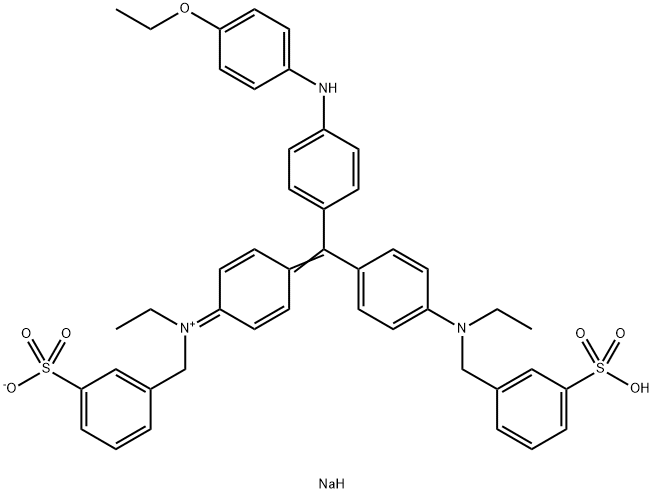

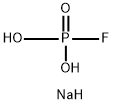



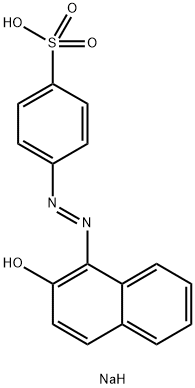
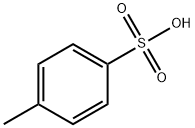
You may like
-
 Orange G 98%View Details
Orange G 98%View Details -
 Orange G 1936-15-8 98%View Details
Orange G 1936-15-8 98%View Details
1936-15-8 -
 Orange G, for microscopy CAS 1936-15-8View Details
Orange G, for microscopy CAS 1936-15-8View Details
1936-15-8 -
 Orange G CAS 1936-15-8View Details
Orange G CAS 1936-15-8View Details
1936-15-8 -
 Orange G CAS 1936-15-8View Details
Orange G CAS 1936-15-8View Details
1936-15-8 -
 Orange G 96% CAS 1936-15-8View Details
Orange G 96% CAS 1936-15-8View Details
1936-15-8 -
 Orange G CAS 1936-15-8View Details
Orange G CAS 1936-15-8View Details
1936-15-8 -
 ORANGE G INDICATOR For Microscopy CAS 1936-15-8View Details
ORANGE G INDICATOR For Microscopy CAS 1936-15-8View Details
1936-15-8
